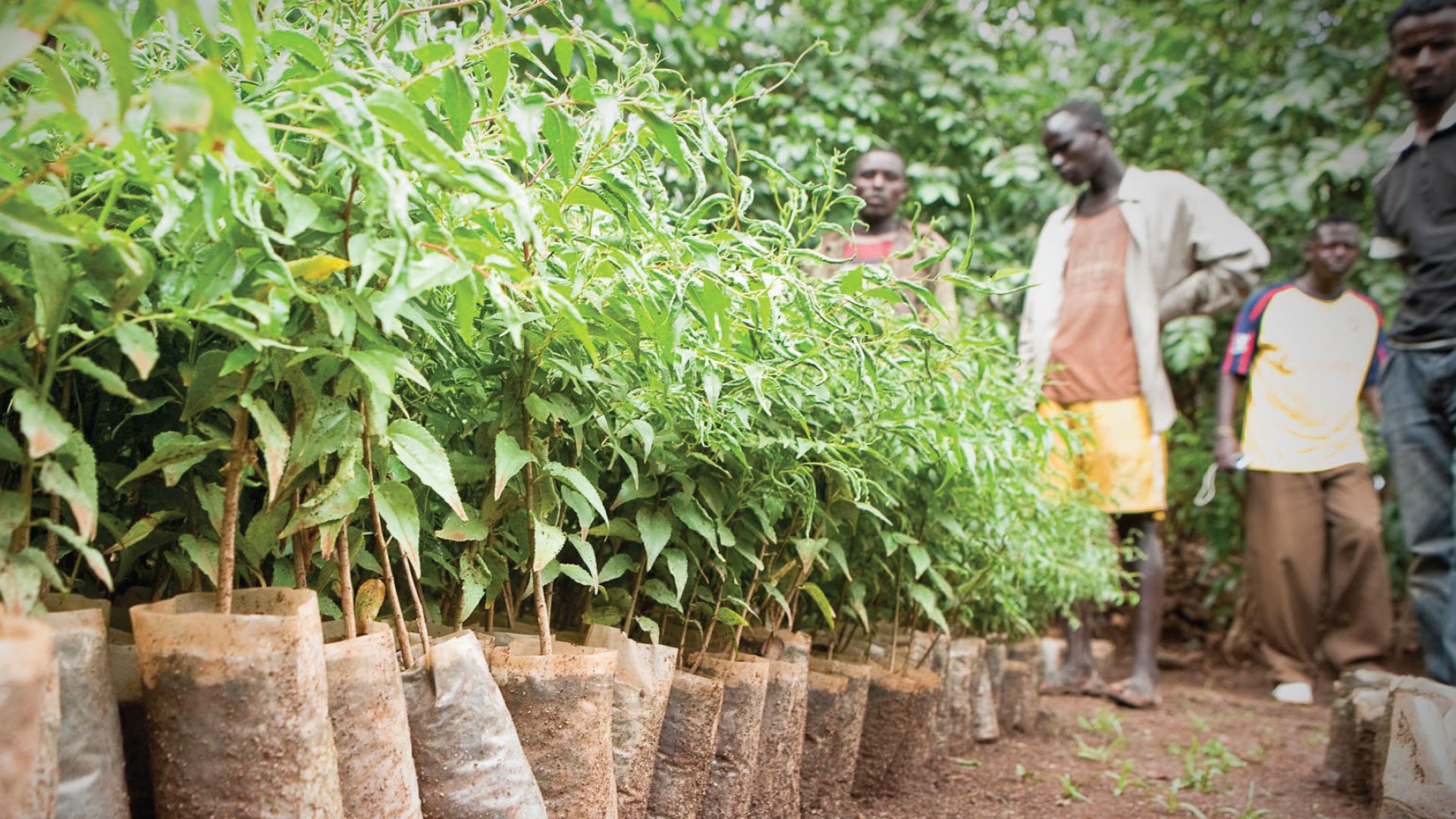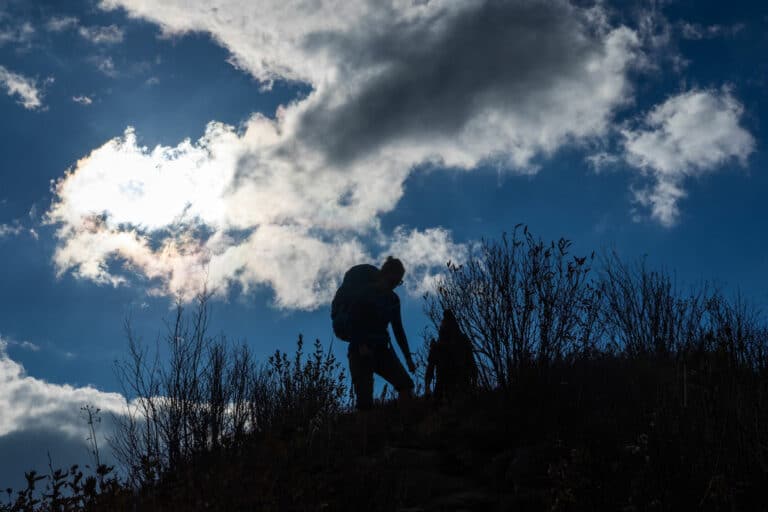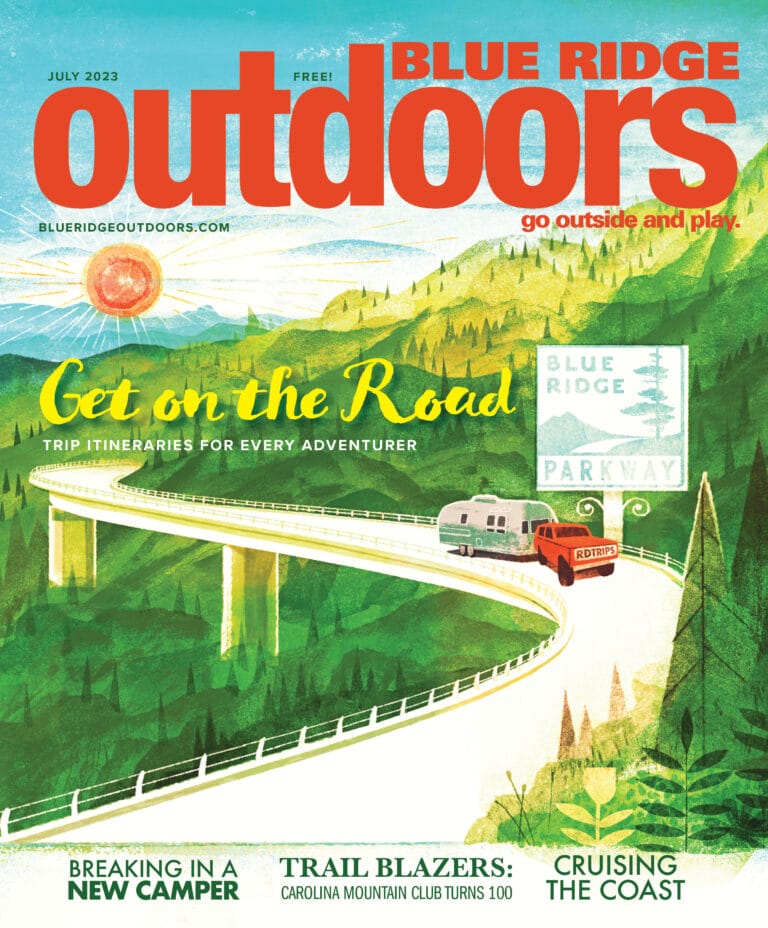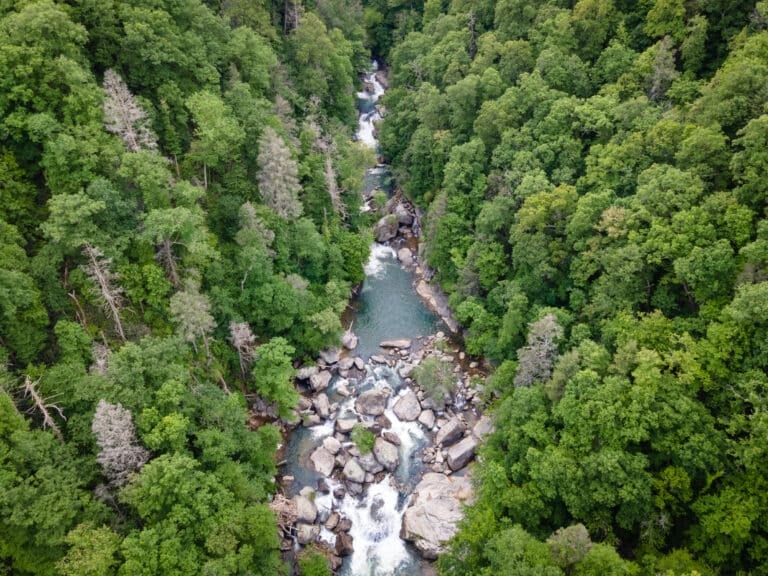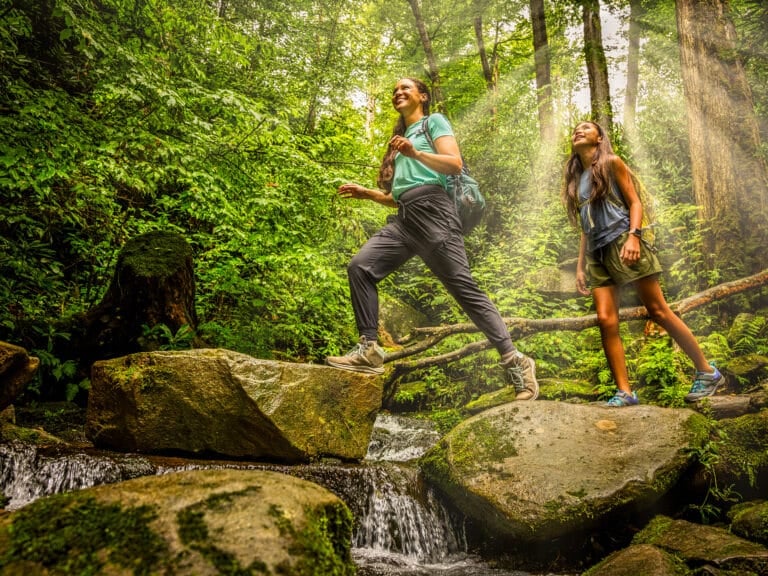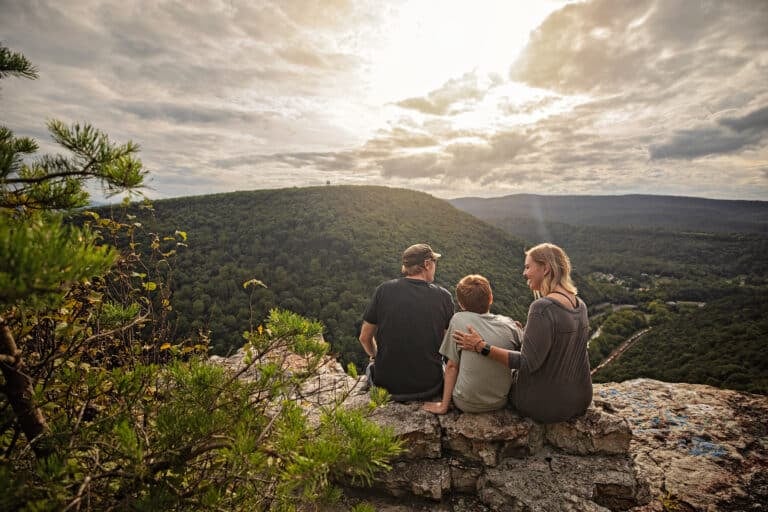BRO scratches beneath the greenwashed veneer to uncover the most environmentally conscious outdoor companies, including the brands that are most active in protecting public lands.
The announcement blasted through the Salt Palace Convention Center’s speakers at a level that was hard to miss. By the third warning, it was clear what Outdoor Retailer and the Outdoor Industry Association wanted—everyone needed to be out in the streets, signs in hand, starting the march through Salt Lake City to the Utah state capitol a few blocks away.
In about 2,500 ways, they got what they wanted—that’s the number of Outdoor Retailer attendees that made the march uptown on a July day in 2017 in a pissed-off farewell to a city and state that the industry decided didn’t care about public lands, or by extension, them.
But even as the large, boisterous crowd made its way up State Street toward the end of a week filled with impassioned speeches decrying the state of Utah and worshiping Bears Ears, despite the happy hours benefiting the Access Fund and Conservation Alliance, despite the buildup for the march and the palpable excitement to leave Utah in Outdoor Retailer’s dust en route to the more politically-hospitable Denver, the show floor of the Salt Palace seemed remarkably…unchanged.
Showgoers hustled through the narrow corridors between booths en route to afternoon meetings, happy hours kept their taps flowing, and business continued as if the public lands debate weren’t even on their radar. For some, it wasn’t—they inexplicably didn’t even know about the march. For others, their explanation of playing hookie on what seemed like required group advocacy time was as simple as a shrug. “It’s business as usual. Someone has to keep the lights on.”
For some brands, it’s just that simple: Sure, without public lands, selling outdoor gear gets harder, but if we can’t sell gear because we’re too busy saving public lands, then what’s the point?
Not everyone took that line, though. Scarpa’s entire booth was vacant, chairs blocking the entrance and a white sign with “GONE MARCHING” scribbled in marker. Other brands made their statements before the show, like Patagonia and Arc’teryx (a Canadian company), which quit the trade show months earlier over the Trump Administration’s decision to reverse President Obama’s designation of Bears Ears National Monument. Their goal? Pressure Emerald Expositions, the organizers of the Outdoor Retailer show, into fighting the state or leaving it. Their plan worked.
But the march laid out in stark contrast the difference in environmental and political action across a seemingly (or at least, that’s what OIA would like you to think) united industry. On one end of the spectrum, Patagonia actively attempts to limit growth and profit. The idea is that by making their products last longer, repairable, or reusable, they’ll sell fewer and create less waste, put less in landfills, etc. Not to mention taking legal action against the government over environmental deregulation and bailing out of the industry’s biggest meeting in an effort to hijack the show from a state (and the economy of that state) that they don’t believe has the industry’s best interests in mind.
Before the decision was made to leave Utah, the OIA would have had brands and consumers believe the biggest change would be made by brands sticking around the show—fighting—marching—raising their voices. The majority of brands apparently agreed, and most would probably say they stuck around for those same reasons. “Now more than ever, we need to act together to advocate and find a common voice to protect our most important asset—our public lands,” REI CEO Jerry Stritzke wrote in a letter posted on the company’s website just after Patagonia dropped out, explaining why his company wouldn’t be following suit.
But if you were standing on the show floor while the seminal act of outdoor advocacy was organizing just outside the Salt Palace’s not-very-thick walls, you would be fair to think fighting for the outdoors is vital to the industry, so long as you didn’t already have a sales meeting scheduled.
Patagonia founder Yvon Chouinard told GreenBiz in 2013 that companies calling themselves “green” is just a buzzword that carries little weight, a marketing ploy targeted toward making consumers feel good about their purchases. Instead, he argues, brands should simply be making less product—“green” or not. That’s the basis of Patagonia’s environmental philosophy: encouraging their customers to buy less and create less waste.
On the other end, The North Face looks to capitalize on that “green” idea in an effort to grow their piggy bank for environmental use on the back end. Last year, TNF launched its “Walls Are Meant For Climbing” campaign, donating $1 million to a trust dedicated to preserving public lands.
And the fight for public lands might be the biggest window into brands’ motivations yet. Rather than universally supported causes like using recycled materials in product, supplying clean drinking water, or picking up trash, causes like the public lands fight and climate change are politically and culturally polarizing. While brands were, in the past, hesitant to endorse a single position on topics like this for fear of alienating a segment of their consumer base (especially for brands like Patagonia and The North Face whose customers extend far beyond the often politically homogeneous outdoor athlete), they’re more willing to take that potential hit in favor of the cause.
Patagonia made headlines last winter for suing the Trump Administration over its delisting of Bears Ears National Monument, potentially the most effective yet riskiest method of securing America’s public lands. The listed defendants: Donald Trump, Ryan Zinke and a collection of other administration bureaucrats. While the statement was applauded by many of the brand’s customers, the hashtag #BoycottPatagonia began circulating online, an obvious sign that at least some potential customers were displeased.
If a brand was willing to skip the march at Outdoor Retailer in favor of meeting with buyers, they likely wouldn’t be willing to sacrifice becoming the butt of a Twitter war with the Interior Department. Patagonia clearly didn’t care, pushing ahead with the suit. But then again, they want to sell fewer products anyway.
Patagonia
While bringing out the big guns themselves, Patagonia also has a big belief in smaller, grassroots organizations, giving 1 percent of their sales (that’s more than just their profits) to these tiny, local groups annually. Grant winners include organizations demolishing dams, working on forest and waterway restoration, fighting climate change on a local level, protecting marine habitats, endangered plants and animals, and supporting local, sustainable agriculture. Over $89 million has gone out to groups like this since 1989. Plus, a new program called Patagonia Action Works gives everyday people who want to help out the resources to find local grant winners, encouraging more of their customers to give back too.
Oboz
For Oboz, the activist philosophy is simple: For every pair of shoes sold by the Bozeman, Montana boot manufacturer, they plant a tree. Since it was founded, the company has partnered with Trees for the Future to give a boost to biodiversity, food, crop windbreaks, mudslide control, and even tree-sourced medicine. As of August 2018, Oboz has spearheaded the planting of over 1,931,000 trees. At many Oboz retailers, you’ll walk out of the store with a sapling for simply trying a pair of boots on. “Like Dr. Seuss’ Lorax, I believed Oboz could speak for the trees,” said John Connelly, president and founder of Oboz. “The story was my favorite to read aloud to my kids and the tale has always stuck with me. So when we started Oboz, we could put the Lorax’s story into action and it was the right fit for our brand. People love trees.”
Aspen Skiing Company
Who has more to lose from climate change than the ski industry? Sure, pushing for renewable energy, funding climate change advocacy groups, and lobbying for political policy that acknowledges the risk of climate change does make good business sense for a brand like the Aspen Skiing Company (also known as Skico, which owns a collection of mountains primarily in Colorado), but they go above and beyond. The company has worked hard to diminish their own internal environmental impact, supported the advocacy group Protect Our Winters (POW), testified for the closure of two of Colorado’s coal power plants, filed legal briefs to the Supreme Court arguing that the EPA is required to regulate carbon dioxide emissions, and even boycotted Kleenex-brand products in their resorts over environmental concerns. “When it comes to sticking their neck out politically, [others] might not be as far out…Aspen Ski Co. has definitely been a leader in the industry,” POW’s executive director told the Denver Post.
prAna
Anyone who has worked in retail knows the waste that is shipped into each store from retailers. On days new shipments of apparel arrive, plastic “poly bags” used to package individual garments pile up in garbage cans until they overflow. prAna decided to do away with the simple yet often-overlooked waste, instead rolling their garments and wrapping them in twine for shipment, a move the brand claims had kept 10.6 million poly bags out of landfills between 2011 and 2016—roughly the weight of 25 adult blue whales. But the brand doesn’t stop there. Sustainability is close at heart, with prAna making an effort to stick to organic cotton, recycled wool, hemp, recycled polyester, and responsibly-sourced down in as many of their products as possible.
The North Face
TNF co-founder Doug Tompkins was a close friend of Patagonia founder Yvon Chouinard, and their environmental habits made that apparent, even if the brands utilize slightly different methods of advocacy today. Tompkins and his wife Kristine McDivitt Tompkins started spending their fortune (a total of $345 million) by buying large swaths of South American lands. Tompkins was killed in a kayaking accident in 2015 but earlier this year his wife finished the deal, donating 1 million acres to the government of Chile in exchange for the government designating another swath of land (they ended up adding another 9 million acres) to expand the country’s national parks and create a handful of new ones, growing the system by 40 percent.
Hometown Heroes
Farm to Feet Socks
These guys keep the sock business local by relying entirely on American materials (i.e. American sheep) and manufacturing done exclusively in the Carolinas. They claim to take “Made In the USA” one step further than most.
Recover Brands
This Hickory, North Carolina company makes shirts and other apparel entirely out of recycled materials. Post-consumer plastics (some of their shirts are made from water bottles—roughly 8 per shirt) and post-industrial cotton help keep these materials out of area landfills.
ENO
Asheville-based Eagles Nest Outfitters is, alongside Patagonia, part of One Percent for the Planet, giving 1 percent of their sales to environmental nonprofits. Plus, early this year, they announced that for every hammock sold, the brand would commit to planting two trees—one for each end of the hammock.
Half-Moon Outfitters
With eight stores scattered across Georgia and South Carolina, the specialty outdoor retailer puts a high priority on sustainability. The chain’s second oldest shop is en route to being completely net-zero, meaning it produces roughly as much energy from rooftop solar panels as it uses. Another store features a large “tree” with metal limbs and solar panel leaves, aimed at powering a large part of that location.
REPREVE
With aforementioned brands like Patagonia, prAva, Recover Brands, and more using their recycled fabrics, Greensboro, North Carolina’s REPREVE is a leading player in sustainable textiles. They’ve transformed over 13 billion plastic bottles into fibers and fabrics that then make technical wicking, cooling, and water-repellent materials popular within and without the outdoor industry.
